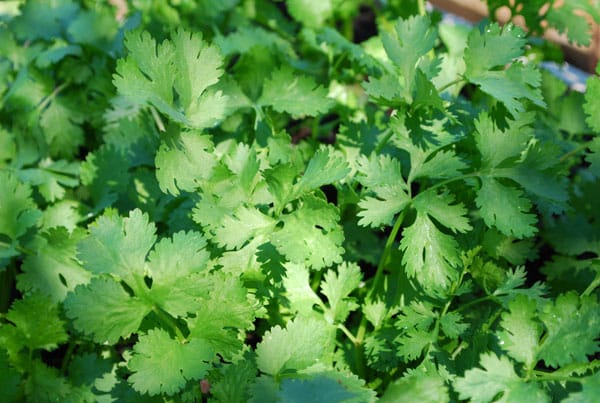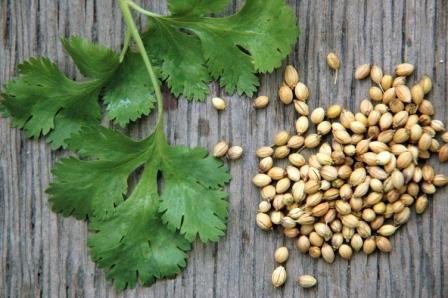Coriander Cultivation Information Guide:-

Introduction of Coriander Cultivation:- Coriander is an annual herb and belongs to the family of Apiaceae and coriander is indispensable spice in the kitchen. It gives good flavor to dish, because of this property coriander seed (Dhaniya) and fresh leaves are common used in every kitchen to prepare testy dishes.The fresh leaves are an ingredient in many Indian foods (such as curries, chutneys and salads). Coriander leaves constitute one of the richest source of Vitamin ‘C’. All parts of the coriander plant are eatable, but the fresh coriander leaves and the dried seeds (Dhaniya) are the parts most traditionally used in cooking. coriander leaves also called as Coriandrum sativums, Chinese parsley, Cilantro, Dhania patta.
Health Benefits of Coriander:- Some of the Coriander health benefits are mentioned below.
- Coriander helps in Skin related disorders.
- Coriander helps in reducing cough.
- Coriander helps in reducing blood pressure.
- Coriander helps in reducing Diarrhea.
- Coriander helps in reducing the cholesterol levels in the blood.
Local Names of Coriander in India:- Kothimbir / Dhane (Marathi), Dhaniya / dhaniya patta / dhania patta / Hara Patta (Hindi), Malliyila (Malayalam), Kothimeera / Dhaniyalu (Telugu), Kottamalli (Tamil), Kottambari Soppu (Kannada), Dhonay paatha (Bengali), Kothmiri, Dhana (Gujarati), Hara Patta(Punjabi).
Commercial Varieties in Coriander Cultivation in India:- Below are some the Coriander varieties cultivated in India.
Co-1: Dual purpose, 110 days, Tolerant to grain mould. Seed yield of 2000 kg/ha (irrigated cultivation) and 750- 800 kg/ha (rainfed cultivation).
Co-2: High yielding dual purpose variety, very tolerant to drought 90 to 100 days, yield of 600 to 700 kg/ha can be expected.
Co-3: Dual purpose variety, less susceptible to grain moulds and wilts. Duration is 3 months, yield about 650 to 700 kg/ha can be expected.
CS-2: Medium to tall with more branching and bushy type with 83 cm height yield about 1,400 kg/ha can be expected.
CS -287: Small, bold grain, highly tolerant to wilt and grain mould, suits for rainfed tracts.
Karan: Small seeded, highly resistant to wilt and stem gall disease.
Agro-Climatic conditions for Coriander Cultivation:- Coriander grows well in dry and cool weather. It does not tolerate any frost. Coriander performs well at a temperature range of 20 to 30 °C.
Best season to grow Coriander:- June to July & October to November.
Soil requirement in Coriander Cultivation:- Coriander grows well in well drained loamy soils. The Optimum PH range 6 to 8 in soil is best suited for its cultivation.
Seed Rate in Coriander Cultivation:- Whole Coriander seeds will not germinate and hence the seeds are split open into halves before sowing. Seed rate is about 20 to 25 kg/ha in rainfed crop condition, and 10 to 12 kg/ha in irrigated crop condition.
Seed Treatment in Coriander Cultivation:– Soak the seeds in water for 12 hours for better germination. Treat the coriander seeds with Azospirillum @ 1.5 kg /ha for better crop establishment and to control wilt disease, Trichoderma viride @ 50 kg/ha.
Pre sowing seed hardening treatment with Potassium Dihydrogen Phosphate @ 10 grams/liter water for 16 hours should be done for rainfed crop condition.
Field preparation and sowing in Coriander Cultivation:-
- Start preparing the main field to a fine tilth. (3 to 4 ploughings may be required).
- Add Farm Yard Manure (FMY) to the soil @ 10 tones/ha before last ploughing.
- Should form channels and beds for irrigated crop.
- Should sow the split coriander seeds @ a spacing of 20 cm x 15 cm.
- Should spray pre-emergence herbicide called Fluchloralin 700 ml by mixing with 500 liter of water per ha.
- The seeds start germinating in about 1 week – 2 weeks.
Manuring in Coriander Cultivation:- Top dressing should be done at 10 kg N/ha 1 month after sowing for the irrigated crop only. Should consider to add Farm Yard Manure (FMY) 10 tons/ha; 40 kg P,10 kg N and 20 kg K for rainfed and irrigated crops.
Irrigation in Coriander Cultivation:- 1st irrigation should be given immediately after sowing and the second on the third day and subsequent irrigations at 6 to 10 days interval. In rainy season, crop hardly requires any irrigation.
Cultivation care in Coriander Cultivation:- Should apply pre-emergence spray of herbicide Fluchloralin 700 ml in 500 liter of water/ha. Thinning should be carried out after 1 month of sowing. Subsequent weeding should be done as and when needed. CCC @ 250 ppm should be sprayed 30 days after sowing for inducing drought tolerance in rainfed crops.
Pests and Disease in Coriander Cultivation:- Following are the Pests and Diseases found in Coriander cultivation.
Powdery mildew: Seed should be treated with Pseudomonas fluorescens (Pf 1) @ 10 grams /kg and foliar spray of Pf1 2 grams/liter or Dinocap 250 ml/ha or spray Wettable sulphur 1 kg/ha at the time of initial showing of the disease and second spray @ 10 days interval. Should spray Neem seed kernel extracts 5 % thrice (1st spray immediately after the showing of disease, second and third at 10 days interval).
Wilt: To contriol this, seed should be treated with Pseudomonas fluorescens @10grams/kg followed by soil application of Pf1 @ 5 kg /ha.
Grain mould: Grain mould can be controlled by spraying Carbendazim 0.1% , which is 500 grams /ha 3 weeks after coriander grain set.
Harvesting of Coriander:- The coriander plants are pulled just when the fruits are in fully ripe stage but green and start drying. The plants should be dried and thrashed with small sticks. Seeds should be cleaned. For fresh coriander leaf, pull out the plants when they are 30 to 35 days old.

Yield of Coriander Leaves and Grains:-
- Coriander Leaf Yield : 6 to 7 tones / ha.
- Irrigated Grain Yield : 500 to 600 kg / ha.
- Rainfed Grain Yield : 300 to 400 kg / ha.
Read about Growing Tomatoes In Containers.
To get Goat and Sheep Farming Information : Read Here.
Where do I get coriander seeds cs1 , I live near Bangalore, Karnataka.
You can get hybrid, high yielding coriander seeds on nursery live dot com
Where do I get moth bean early variety seeds for non irrigation in Yavatmal, Maharashtra and what will be the cost per kg.
Hello Jagdish, I have a query.
Here you have mentioned that the seed requirement is 10-12kg/ha which translates to roughly 4-4.5 kg/acre.
However in another article wherein you showed profit calculation on coriander cultivation, the seed requirement is mentioned as 250gm /acre.
Which one is correct?
The first one is very much justified for commercial scale cultivation. However, the 250 grams per acre is also justfied with hybrid seeds with less density which is usually done for homegrown purpose.
Hi Jagdish,I have a plan to grow this… my farm land is in Tamil Nadu, Tiruvannamalai district, from Chennai it should be less than 100 KMs.. please suggest how to do the marketing.
Hello Sir,
May I know which are the names of Naati/Desi/Local varieties of coriander seeds for cultivation for Leaves in lands near Jigani and Anekal- Karnataka (Border of Karnataka and Tamil Nadu)please